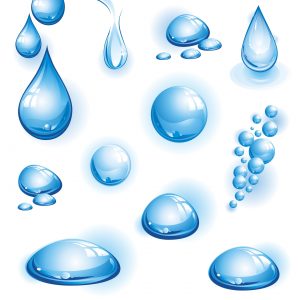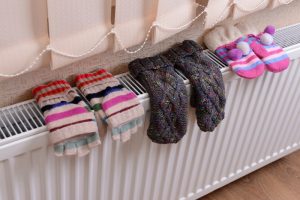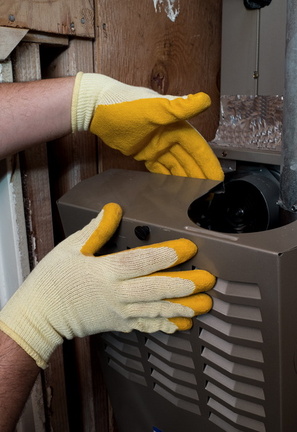If you have a heat pump installed in your home, you’ll expect it to fulfill both sides of its heating and cooling bargain: air conditioning during hot weather, heating during cold weather. With the chilly temperatures now crawling up on us in Washington, DC, you might find that your heat pump is failing on the “heat” promise. What might cause this, and what can you do to get the heat levels you need?
Polar Bear handles Washington, DC heat pump installation, repair, and maintenance—we know what sort of problems you may encounter with the heat pump in your home, and we are ready to help. Contact us to schedule an appointment.
Why you might not get heat from your heat pump
Before investigating any possible serious malfunctions with your heat pump, make sure that you have it set correctly. Check the thermostat to see that the pump is in “heating” mode, not “cooling.” Make certain that the current programming in the thermostat (if you have a digital, programmable model—and you should) isn’t causing it to shut off at the wrong time.
There is the possibility that the thermostat has developed a fault and is sending the wrong instructions to your heat pump: this is a common occurrence, but one that technicians will have little trouble addressing.
If the heat pump is experiencing issues, the likely reasons are a malfunctioning reversing valve or compressor. A heat pump needs two compressors and the reversing valve to change from air conditioning to heating.
Another possibility to consider is the temperature outdoors. Heat pumps draw heat from outside to warm your home. Even when it’s cold outdoors, there is still some heat available. However, at extreme cold temperatures, heat pumps will struggle to operate efficiently. This will become noticeable when the outdoor temperature drops below 35°F. Then your auxiliary heat will turn on to keep your home comfortable. However, if there is an issue with your electric resistance coils, then your heat pump will not be able to heat your home.
Another issue can be the defrost cycle. When the heat pump is absorbing heat from the outdoor air, ice can form on the evaporator coils. Usually, your heat pump will have a defrost cycle that runs periodically to melt this ice and allow your heat pump to function. However, if there is a problem with your defrost cycle, the ice can build up on the coils and prevent them from absorbing the heat from the air.
Heat pumps won’t work for all homes and all weather conditions. If you discover that your heat pump isn’t malfunctioning and simply cannot cope with the extreme cold, you may need to get a replacement model, a larger heat pump, or a back-up system.
Heat pump repairs require service from professional HVAC technicians. If you can’t explain why your heat pump has stopped giving you heat, contact us right away. With more than a decade of experience, we can find out the source of the problem and devise a solution that will restore your warm indoors as quickly as possible. Give your Washington, DC heat pump the finest care— call Polar Bear Air Conditioning & Heating!
Continue Reading
Tags: Heat Pumps, Washington
Posted in Heat Pumps | Comments Off on Washington, DC Heat Pump Tip: Why Your Heat Pump Isn’t Heating
 Humidity really is the bane of our comfort during the summers. Especially when it comes to HVAC services in Washington, DC, it gets hot and muggy and your air conditioner might not be able to handle the load all on its own. Air conditioners can naturally dehumidify your air, but they’re not as effective as they could be working together with a dehumidifier!
Humidity really is the bane of our comfort during the summers. Especially when it comes to HVAC services in Washington, DC, it gets hot and muggy and your air conditioner might not be able to handle the load all on its own. Air conditioners can naturally dehumidify your air, but they’re not as effective as they could be working together with a dehumidifier!


 With the winter weather wearing you down, you need to know that you have a comfortable environment waiting for you back home. That means having a heater that is capable of heating your house in an effective and dependable manner. But the truth is that no heating system is ever going to be 100% reliable. If and when your heater needs repairs, contact a member of our team right away.
With the winter weather wearing you down, you need to know that you have a comfortable environment waiting for you back home. That means having a heater that is capable of heating your house in an effective and dependable manner. But the truth is that no heating system is ever going to be 100% reliable. If and when your heater needs repairs, contact a member of our team right away. There are a number of different
There are a number of different  We’re moving into March in just a few short days. Leaving February behind often gets homeowners thinking about the coming spring season, and the heat of summer that follows. We know that winter has been a challenge for everyone in our area, but we must warn you not to get too far ahead of yourself. While warmer weather is definitely on its way, your heater still has plenty of work to do in the weeks that lie ahead.
We’re moving into March in just a few short days. Leaving February behind often gets homeowners thinking about the coming spring season, and the heat of summer that follows. We know that winter has been a challenge for everyone in our area, but we must warn you not to get too far ahead of yourself. While warmer weather is definitely on its way, your heater still has plenty of work to do in the weeks that lie ahead.